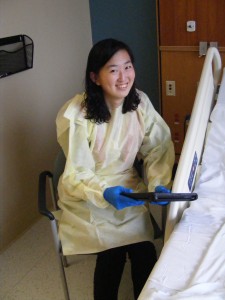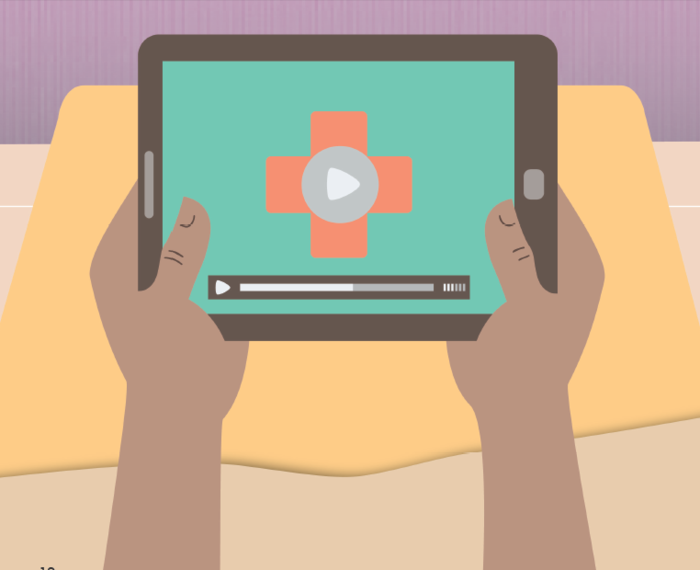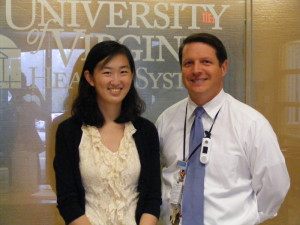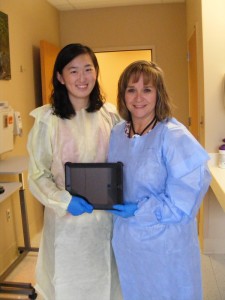Chi Zhang noticed that patients in isolation missed their families. She wondered whether an iPad could make a difference.
In 2014, Chi was a recipient of the Engaging Race Award, a scholarship to fund her service initiative. She shared with us how her project turned out:

“At the Transitional Care Hospital (TCH) in Virginia, where I volunteered last semester, each patient is placed in an isolation room to prevent disease transmission. Week to week, I realized that the patients were not getting better. They remained in the same lonely, silent rooms with the same blank stare in their eyes. In addition, all visitors and healthcare workers must wear protective gowns and masks, so the patient could go months without ever being able to see someone’s face. Although this patient isolation is medically imperative, it doesn’t help with a patient’s healing, either spiritually or psychologically.
My idea of purchasing tablets with the Engaging Race grant would give patients more time to communicate with their family, even when families cannot physically visit the hospital. During my volunteer time, I had learned that many of the patients are not even from Virginia. They live hours and hours away, and they haven’t been home for months. Of course, FaceTime is not a perfect substitute for face-to-face time, but it’s still better than no communication at all. Tablets also provide an opportunity for volunteers to interact with patients, teaching them how to use the tablets and set up social media accounts. The best part about bringing this service project to life was knowing that my idea helped someone.
Over the summer, there was a patient from Pakistan. When the physical therapy team was with her, they set up a tablet and connected the patient to her family via Skype. Even though the family spoke virtually no English, and all anyone was able to do was smile and wave, it was so great that the family could be in there for the treatment. I imagine that even if the family didn’t know exactly what the exercises were, they were glad that their loved one was getting great care.
The patient population at the hospital leans towards the older side, so they were a bit hesitant about learning how to use this new foreign object at first. However, the patients really enjoyed seeing updates on their grandchildren after the staff and volunteers showed patients how to use Facebook. It was really awesome when everyone contributed a different idea of how the tablets can be used, from Sudoku puzzles to meditation apps. I heard one of the patients is even starting to learn both Russian and French at the same time by reading the original version of War and Peace.
My advice for people who want to do something for their community is to be collaborative! My project idea came from my conversations not just with patients, but also with the people who are taking care of them every day. I could not have done it without the incredible support I’ve had from both NSCS and from the staff at TCH. Everyone I have talked to about this project has helped me develop the idea further, has pushed me to be more creative, and the end result of this project has been far better than anything I could have imagined alone.”
*The Engaging Race Scholarship is open again this year! If you’re an NSCS member, log in to your profile and describe service initiative you’d like to start.



